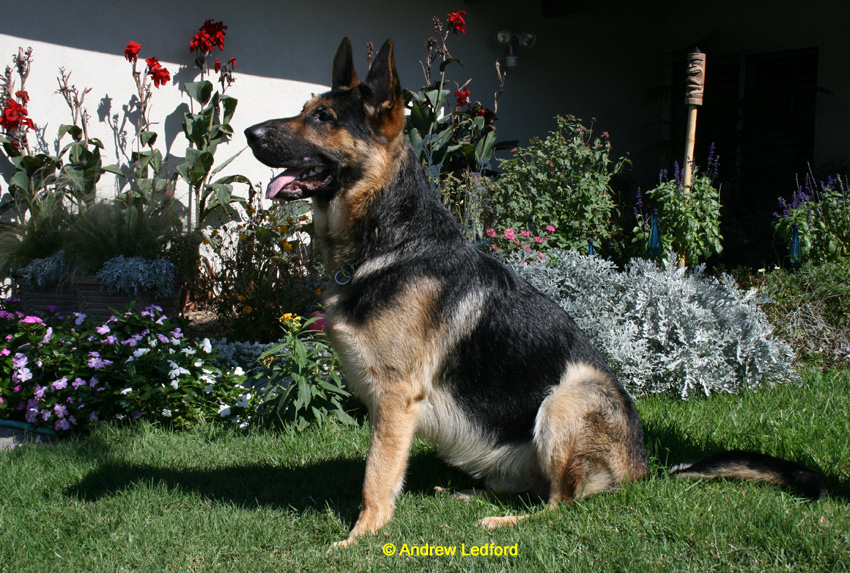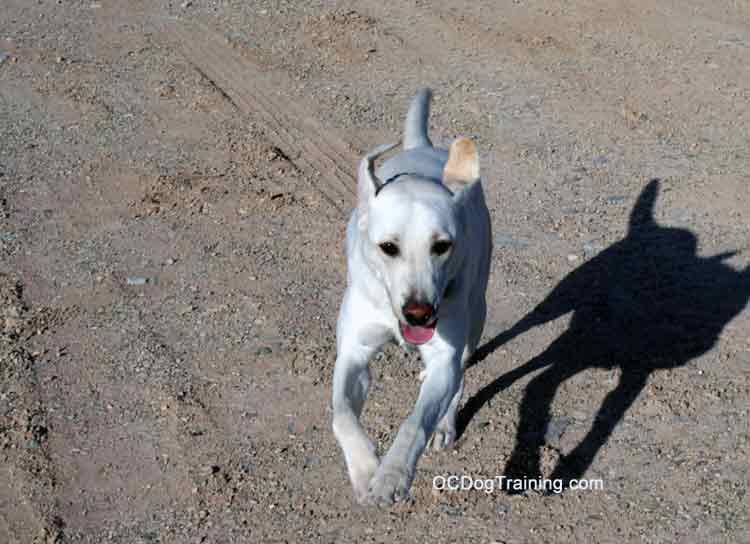Dog Training Commands
From your dog trainer Andrew Ledford 714-827-4058. These are the dog training commands I recommend using. Adopting clear communication will give your dog the fewest conflicting signals when teaching and prompting behavior. Reducing conflict improves communication and performance when training is most needed.
Why use the commands from my training programs?
The commands listed are what I have found work the best for most dogs and most households that speak American English. The commands I use have been selected over years of experimenting with various combinations with the goal of getting practical real world results.
Dog Training Commands Increase Reliability and Will Make Off Leash Control More Predictable. This photo shows is a German Shepherd Dog (GSD) demonstrating off leash control.
Dog Training Commands Increase Reliability and Will Make Off Leash Control More Predictable. This photo shows is a German Shepherd Dog (GSD) demonstrating off leash control.

Dog training commands for a pet dog training program.
- Dogs Name – Informal recall
- “Good” – Conditioned reward
- “No” – Conditioned aversive
- “Off” – Don’t touch with mouth or paws. Very useful for building the dog’s attention span. Can be used to focus the dog in highly distracting conditions.
- Counting out loud – time out for not staying Off
- “Heel” (to walk with the dog’s shoulder next to the handler’s leg, traditionally this is on the left side.)
- “Take” or “Take it” – the dog can take the food
- “Sit” – to sit
- “Down” – to lay down
- “Get: and/or “Get your Toy” (or name of toy) – to retrieve
- “Drop” – (“Out” for protection dogs) to release the toy or other objects
- “Easy” – to stop at the end of the leash and wait for you, or to come back to you and wait. Can also be used to focus the dog to you in highly distracting circumstances. Not to take food forcefully.
- “Out” – to go outside
- “Place” – “Kennel Up” – “Bed” – To go into crate
- “Place” – “Bed” – to go lay down on a dog bed, rug, towel, et..
- “Quiet” – to be quiet
- “Wait” – Low level stay command
- “Stay” – Cannot move until another formal command is given
- “Here” or “Come” – Formal recall – to come when called
- “Back” – To get back out or in the door
- “Potty” or “Break” – To eliminate on command
- “Move” – to move away from person
- “Floor” – to move off of furniture
Andrew Ledford
Dog and Puppy Training for the 562 and 714 areas
714-827-4058

